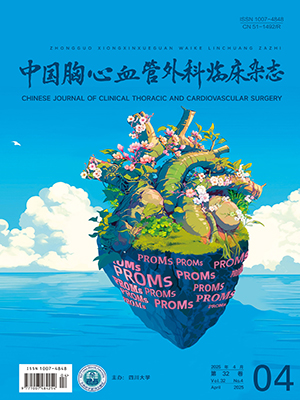| 1. |
Sodian R, Weber S, Markert M, et al. Stereolithographic models for surgical planning in congenital heart surgery. Ann Thorac Surg, 2007, 83(5): 1854-1857.
|
| 2. |
Shiraishi I, Yamagishi M, Hamaoka K, et al. Simulative operation on congenital heart disease using rubber-like urethane stereolithographic biomodels based on 3D datasets of multislice computed tomography. Eur J Cardiothorac Surg, 2010, 37(2): 302-306.
|
| 3. |
Olivieri L, Krieger A, Chen MY, et al. 3D heart model guides complex stent angioplasty of pulmonary venous baffle obstruction in a Mustard repair of D-TGA. Int J Cardiol, 2014, 172(2): e297-e298.
|
| 4. |
Dankowski R, Baszko A, Sutherland M, et al. 3D heart model printing for preparation of percutaneous structural interventions: description of the technology and case report. Kardiol Pol, 2014, 72(6): 546-551.
|
| 5. |
Valverde I, Gomez G, Coserria JF, et al. 3D printed models for planning endovascular stenting in transverse aortic arch hypoplasia. Catheter Cardiovasc Interv, 2015, 85(6): 1006-1012.
|
| 6. |
Olivieri LJ, Krieger A, Loke YH, et al. Three-dimensional printing of intracardiac defects from three-dimensional echocardiographic images: feasibility and relative accuracy. J Am Soc Echocardiogr, 2015, 28(4): 392-397.
|
| 7. |
Fujita B, Kütting M, Scholtz S, et al. Development of an algorithm to plan and simulate a new interventional procedure. Interact Cardiovasc Thorac Surg, 2015, 21(1): 87-95.
|
| 8. |
Bauch T, Vijayaraman P, Dandamudi G, et al. Three-dimensional printing for in vivo visualization of his bundle pacing leads. Am J Cardiol, 2015, 116(3): 485-486.
|
| 9. |
Otton JM, Spina R, Sulas R, et al. Left atrial appendage closure guided by personalized 3D-printed cardiac reconstruction. JACC Cardiovasc Interv, 2015, 8(7): 1004-1006.
|
| 10. |
Son KH, Kim KW, Ahn CB, et al. Surgical planning by 3D printing for primary cardiac schwannoma resection. Yonsei Med J, 2015, 56(6): 1735-1737.
|
| 11. |
Kurup HK, Samuel BP, Vettukattil JJ. Hybrid 3D printing: a game-changer in personalized cardiac medicine? Expert Rev Cardiovasc Ther, 2015, 13(12): 1281-1284.
|
| 12. |
Mirochnik N, Hagège A, Zacouto F, et al. Physical reproduction of cardiac sutures. A new field of investigation in cardiology. Arch Mal Coeur Vaiss, 2000, 93(10): 1203-1209.
|
| 13. |
Noecker AM, Chen JF, Zhou Q, et al. Development of patient-specific three-dimensional pediatric cardiac models. ASAIO J, 2006, 52(3): 349-353.
|
| 14. |
Jacobs S, Grunert R, Mohr FW, et al. 3D-imaging of cardiac structures using 3D heart models for planning in heart surgery: a preliminary study. Interact Cardiovasc Thorac Surg, 2008, 7(1): 6-9.
|
| 15. |
Schmauss D, Haeberle S, Hagl C, et al. Three-dimensional printing in cardiac surgery and interventional cardiology: a single-centre experience. Eur J Cardiothorac Surg, 2015, 47(6): 1044-1052.
|
| 16. |
Costello JP, Olivieri LJ, Krieger A, et al. Utilizing three-Dimensional printing technology to assess the feasibility of high-fidelity synthetic ventricular septal defect models for simulation in medical education. World J Pediatr Congenit Heart Surg, 2014, 5(3): 421-426.
|
| 17. |
Holt BA, Hearn G, Hawes R, et al. Development and evaluation of a 3D printed endoscopic ampullectomy training model (with video). Gastrointest Endosc, 2015, 81(6): 1470-1475.
|
| 18. |
Lim KH, Loo ZY, Goldie SJ, et al. Use of 3D printed models in medical education: A randomized control trial comparing 3D prints versus cadaveric materials for learning external cardiac anatomy. Anat Sci Educ, 2016, 9(3): 213-221.
|
| 19. |
Mathur M, Patil P, Bove A. The role of 3d printing in structural heart disease: All that glitters is not gold. JACC Cardiovasc Imaging, 2015, 8(8):987-988.
|




